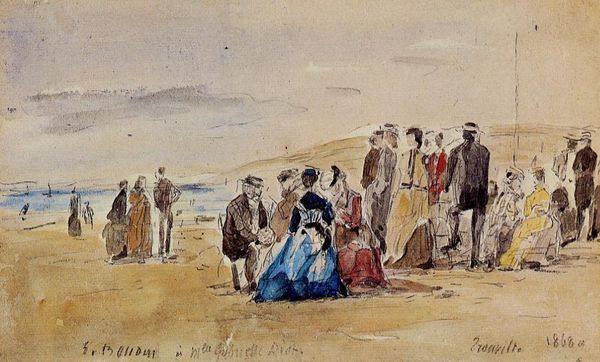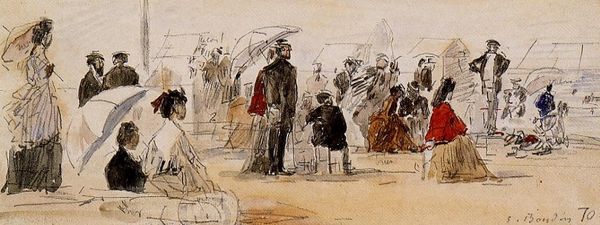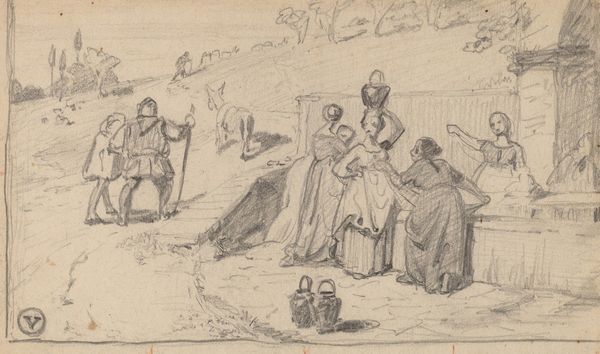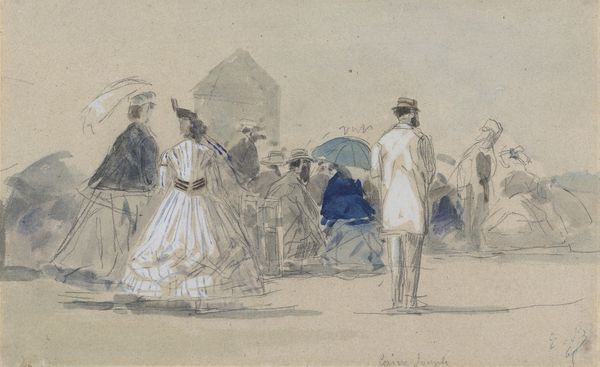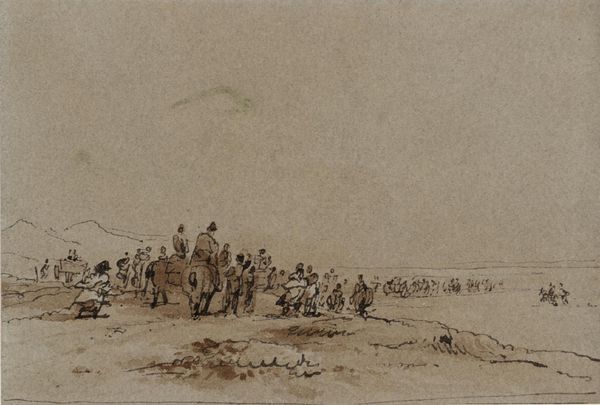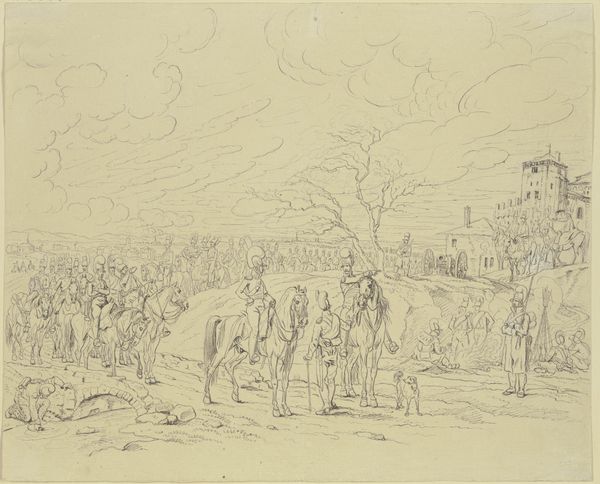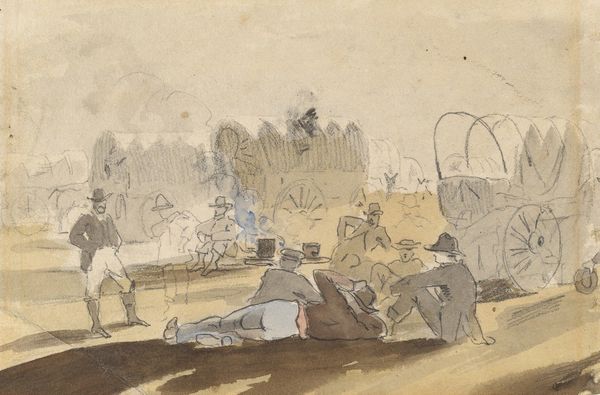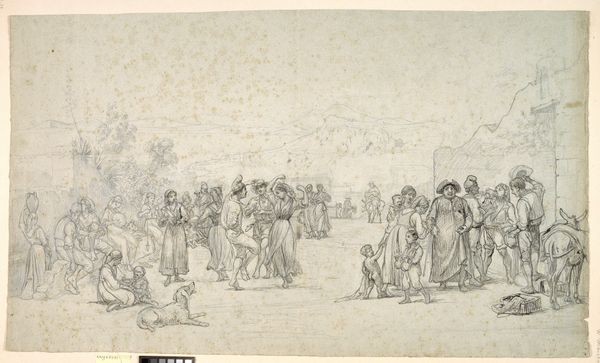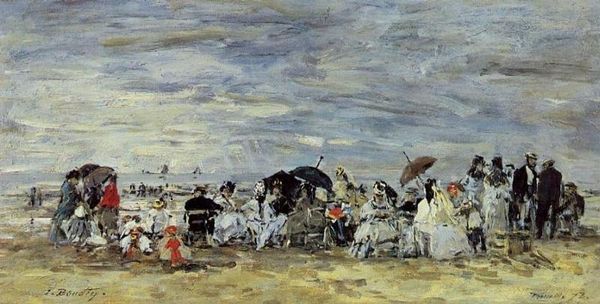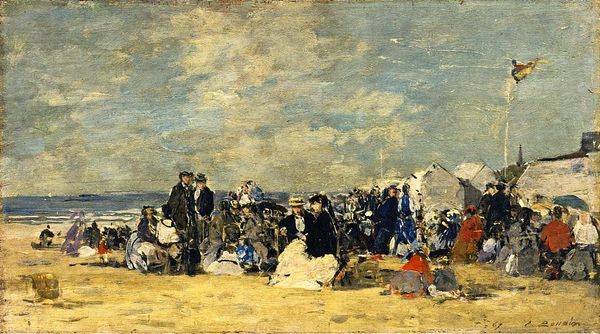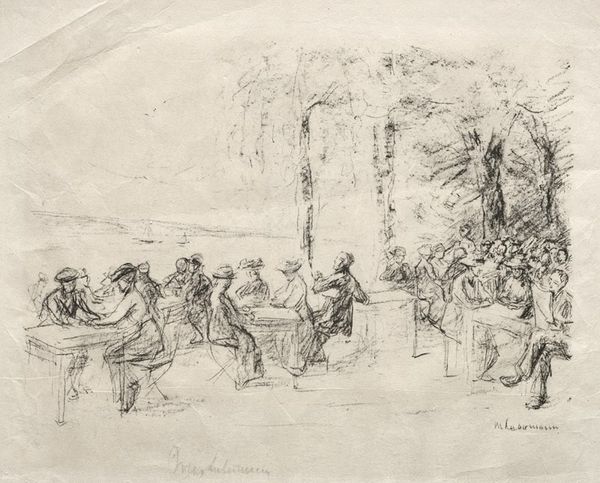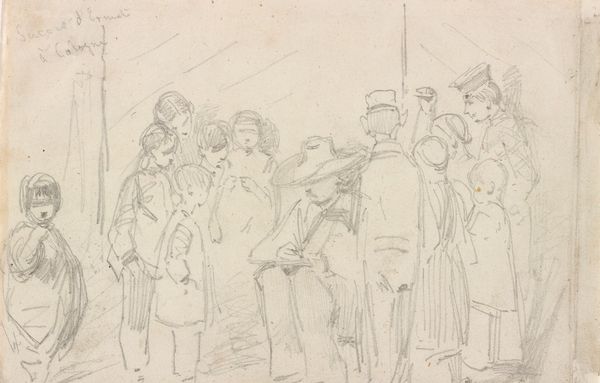
plein-air, watercolor
#
impressionism
#
plein-air
#
landscape
#
oil painting
#
watercolor
#
genre-painting
#
watercolor
Copyright: Public domain
Eugène Boudin made this beach scene at Trouville in 1866, using watercolor and pencil. Rather than traditional oil paints, Boudin chose the immediacy of watercolor, a medium often associated with sketching and plein air painting, that allowed for the swift capture of fleeting moments. The thin washes of color give a sense of the breezy atmosphere and the figures are rendered with economical strokes, yet their social status is evident through their clothing. Note the fashionable dresses and parasols, signs of leisure and affluence. Trouville was becoming a popular resort for the Parisian bourgeoisie, made accessible by the expanding railway network, a symbol of industrial progress. Boudin, therefore, engaged with a contemporary social phenomenon. The ease of the watercolor technique belies the economic structure that enabled these beachgoers to enjoy their seaside retreat, highlighting the changing landscape of leisure and consumption in 19th-century France. By considering the material and context, we can see how Boudin's work reflects broader shifts in society.
Comments
No comments
Be the first to comment and join the conversation on the ultimate creative platform.
